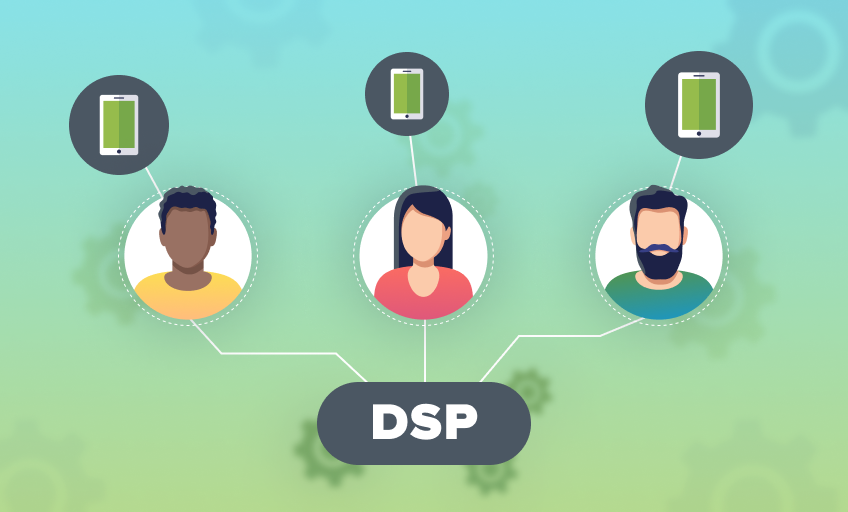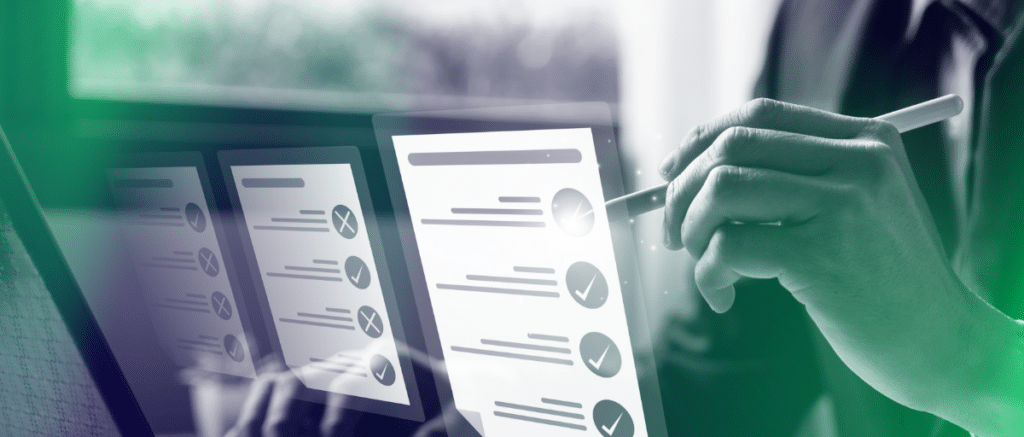Programmatic advertising has become a juggernaut. It accounts for over 80% of online ad spending. Mobile programmatic advertising is responsible for a whopping 75.6% of all programmatic advertising. More advertisers than ever are aware of this rapid growth, leading to the number of programmatic advertisers to double over the last year.
One of the best, most common ways to buy programmatically is a demand-side platform (DSP). In this post, we explain the ins and outs of DSPs and how you can use one effectively.
What is a DSP?
DSPs were originally developed with web ads in mind, mainly as a way for advertisers to generate brand awareness or drive customers to their website to make a purchase. But as the mobile device market became more sophisticated, it became the primary development focus of programmatic buying tech.
Every DSP uses machine learning models for user targeting and campaign optimization. An algorithm evaluates the value of each potential impression and bid in real time. Previously, advertisers spent lots of time and manual effort managing allow or block lists on a publisher level. DSPs, however, changed everything. Processes have become more automated, reducing time lost on manual work. Now you can focus more on your user acquisition strategy, testing & optimization, and measuring success.
A DSP also offers more data. The best offer nearly total analytics transparency so that you can accurately measure the success of your campaigns and optimize them to meet your goals and KPIs.
How to Use a DSP Effectively
DSPs are complex software systems with many levers to help accomplish advertiser goals. Depending on how these levers are pulled, you can hit a bullseye or completely miss the mark. Here are some of the most common issues and practical tips on working with a DSP partner.
1. Flexible Budget and CPI
Low budgets and inflexible daily spending limits can seriously hamper campaigns. Machine learning models depend on reaching large enough sample sizes to identify high-quality users. When an advertiser gives a DSP the flexibility it needs to scale spend up or down, they get better targeting for engaged users.
2. Choose the Right Goals
When starting out, it is important to have a firm understanding of what you are trying to achieve. Common goals include event optimization, return on advertising spend (ROAS) optimization, and retention rate optimization. These goals are crucial in setting up your campaigns, analyzing performance, and implementing campaign optimizations.
For instance, Chartboost excels at in-app purchase (IAP) ROAS optimization, which is the most commonly used model for game developers. We recommend advertisers evaluate their D7 IAP achieved across several weeks to avoid drawing incorrect conclusions from anomalies in daily performance.
3. Build Mutual Trust With Sharing Data
To help boost campaign performance, we recommend advertisers provide both attributed and non-attributed data via a mobile measurement partner (MMP) in real time. Being open and transparent with your data helps the DSP accumulate more data to consistently achieve your goals. The machine learning model can then target the high-quality users that you’re after.
4. Try Different App Platforms
Each platform offers very different results. Usually, advertisers think first of Apple and Google Play. However, Amazon is growing in importance. Amazon users are both Fire OS device users (such as the Fire Tablet, Fire Phone, and Fire TV) and Android users who have installed the Amazon Appstore — about 64% of those users are located in the United States.
The Amazon Appstore often surprises publishers, providing high-quality users with a cost per impression (CPI) lower than iOS and a ROAS that can be even higher than Google Play. What’s more, its easy to migrate an Android app to the Amazon platform.
5. Patience Is Golden
Success with your DSP is built on top of data. The longer a DSP runs a campaign, the more data it has to guide its decisions. Exercise patience with a new DSP campaign; it has little data in the beginning and may not perform to expectations right away. When a model is successfully trained, a campaign can take four to six weeks or longer to drive scale and achieve stable performance.
Programmatic buying has quickly become a necessity for achieving peak campaign performance. These tips can help you get off to a strong start using a DSP. Practice makes perfect — along with growing returns on your ad investment. If you’re interested in learning more or want to see if Chartboost DSP is a good fit for your team, start advertising with us today.



